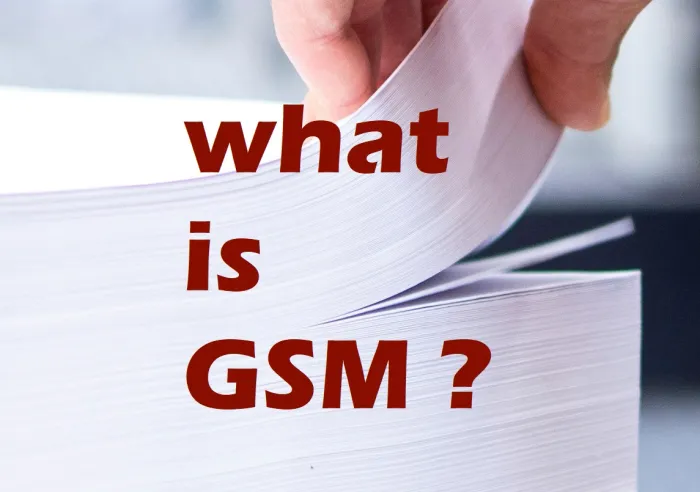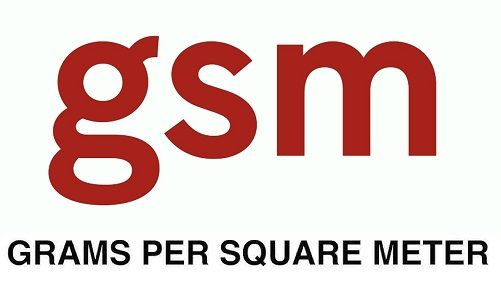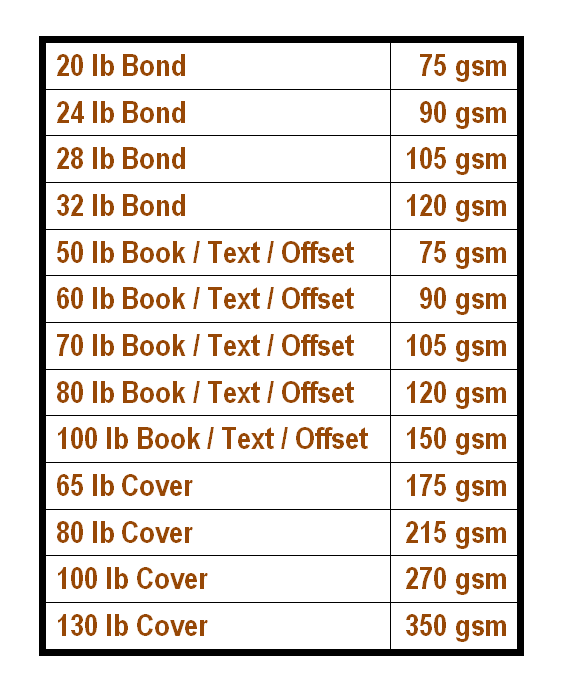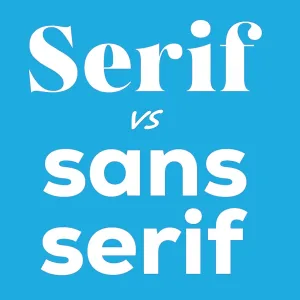Printing Terminology: What does GSM mean in regard to Paper?

estimated reading time: 4 minutes
What does GSM stand for?
GSM stands for Grams per Square Meter. It is a standardized method
for expressing the weight of paper. Abbreviated as GSM or gsm, it represents
the weight in grams of a single sheet of paper measuring one square meter (e.g.
one meter in width by one meter in length).

Paper Weight: Metric System vs Imperial System
Most countries of the world use the metric system for
expressing weights and measures. As such, the GSM system, which uses the metric
units of grams and meters, is the international standard and the most widely used
method for expressing the weight of paper.
However, in the United States, Imperial measurements (such
as pounds and inches) are still widely used for expressing weights and
measures. Hence, the predominant US system for designating the weight of paper is
not GSM. Though the use of GSM is gradually becoming more commonplace in the US,
the weight of paper is still expressed as "Pounds" the majority of the time (with
Pounds usually being abbreviated as lb or #).
The pound weights are derived from the weight of 500 sheets of a given paper in its Basic size. These Basic sizes are designated using Inch increments and vary by paper category.
The Basic sizes of common
paper categories are shown below…
Bond Paper: 17" x 22"
Book, Text, and Offset Papers: 25" x 38"
Cover Paper: 20" x 26"
Index Paper: 25.5" x 30.5"
Here are some examples of how the pound designation for paper stocks is determined. If 500 sheets of Bond paper in its Basic Size of 17" x 22" weigh a total of 20 pounds, the paper is labelled as 20# Bond. If 500 sheets of Offset paper in its Basic Size of 25" x 38" weigh a total of 60 pounds, the paper is labelled as 60# Offset. Likewise, if 500 sheets of Cover paper in its Basic Size of 20" x 26" weigh a total of 100 pounds, the paper is labeled as 100# Cover.
This system of Basic sizes can be confusing because each category
of paper has a different Basic size. For example, 24# Bond paper is
actually heavier than 50# Offset paper. So you can't always go by the
# designation when comparing two different categories of paper because the
Basic sizes are different. However, within the same paper category a larger
pound designation will always signify a heavier stock.
Compared to the # designation, the GSM system makes it instantly clear
which stocks are heavier or lighter relative to other stocks. This is
because instead of having a different Basic size for each category of paper, the
GSM system uses a consistent measurement of one square meter for all categories
of paper. Hence, the higher the GSM, the heavier the paper…and the lower the
GSM, the lighter the paper.

Does GSM designate a Paper's Thickness?
Not exactly. It is a common misconception that GSM
designates a paper's thickness. GSM only designates the weight of the paper,
not its measurable thickness. However, GSM ratings will provide a relative
thickness when comparing two stocks within the exact same paper category. In
this case, the stock with the higher GSM will be thicker than the stock with
the lower GSM.
The same holds true for the "Pounds" designation of paper. The
Pound rating does not provide the thickness of the paper, only its weight.
However, just like with the GSM system, the Pounds can provide a relative
thickness when comparing two stocks with the same paper category. In this case,
the higher the pound rating, the thicker the stock.
Whether using the GSM system or the Pounds system, the physical
thickness of a paper stock can be measured with a caliper, paper gauge, or
other precision measuring device. Also, most paper manufacturers publish online
charts that show nominal thicknesses for the various paper types. These
thicknesses are usually shown in microns, millimeters, and/or increments of an inch.
In addition, thicker paper stocks and cardstocks are often designated
using Points. One point, often abbreviated as "PT", is equal to 1/1000th of an
inch (.001"). Hence, a 12PT cardstock would be .012" in thickness. A 14PT
cardstock would be .014" in thickness, and so on.

Color Vision is always ready to help!
As a full-service printer, Color Vision can assist with just
about any printing need you may have. Plus, we're always happy to help you
choose the right type and weight of paper for your projects.
So whether you are looking for book printing, full color
printing, laminated printing or something else, be sure to give us a call
at 800-543-6299 to discuss your printing needs.
Or, use our simple Quote Request form to send us your
project's specifications and we will email a custom quote to you.
As always, we look forward to assisting with your
next print project!
Related Article: The meaning of Paper Basis Weight
Related Articles

Serif vs Sans Serif Fonts: Which to use for a Print Project?
Read This Article

Raster vs Vector Images: The Key Differences Explained
Read This Article

Custom Book Printing: What is Wire-O Binding?
Read This Article

Commercial Printing: What does “Halftone” mean?
Read This Article